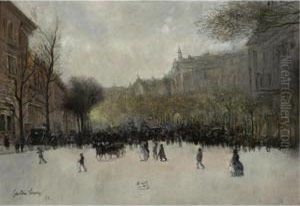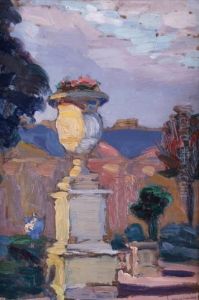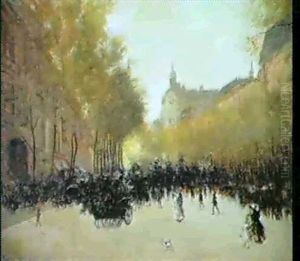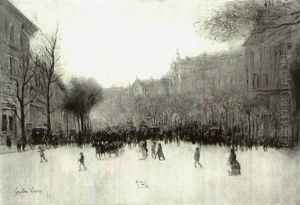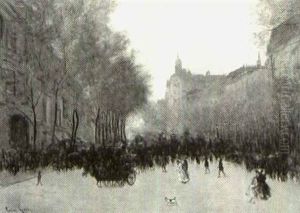Gaston Veuvenot Leroux Paintings
Gaston Veuvenot Leroux was a notable French sculptor born in 1854. His career spanned the late 19th and early 20th centuries, a period rich in artistic evolution in France. Leroux was part of a generation that witnessed the transition from traditional academic art to the beginnings of modernism, yet his work largely remained true to the classical and academic styles that dominated French sculpture in his early years.
Educated at the École des Beaux-Arts in Paris, Leroux was a student under renowned sculptors such as François Jouffroy and Alexandre Falguière. This training grounded him in the techniques and aesthetics of classical sculpture, which would inform much of his later work. Leroux's sculptures often featured allegorical subjects, historical figures, and themes drawn from mythology, executed with a precision and grace that reflected his academic training.
Leroux participated in the Paris Salon, the official art exhibition of the Académie des Beaux-Arts in Paris, where he gained recognition and accolades for his work. His sculptures were known for their detailed realism, nuanced portrayal of human emotions, and adherence to classical beauty ideals. Despite the rise of new art movements such as Impressionism and later, Cubism, during his lifetime, Leroux's work remained largely unaffected by these trends. Instead, he continued to refine his mastery of traditional sculpture techniques.
Throughout his career, Leroux received several commissions for public monuments and memorials, contributing to the cultural and historical landscape of France. His works can be found in various museums and public spaces across the country, testament to his skill and popularity as a sculptor.
Gaston Veuvenot Leroux's death in 1942 marked the end of a long and productive career. Though not as widely known today as some of his contemporaries, his contributions to French art and sculpture during a period of significant change cannot be understated. Leroux's dedication to classical ideals in a time of artistic upheaval represents a bridge between the past and the evolving future of French art.
